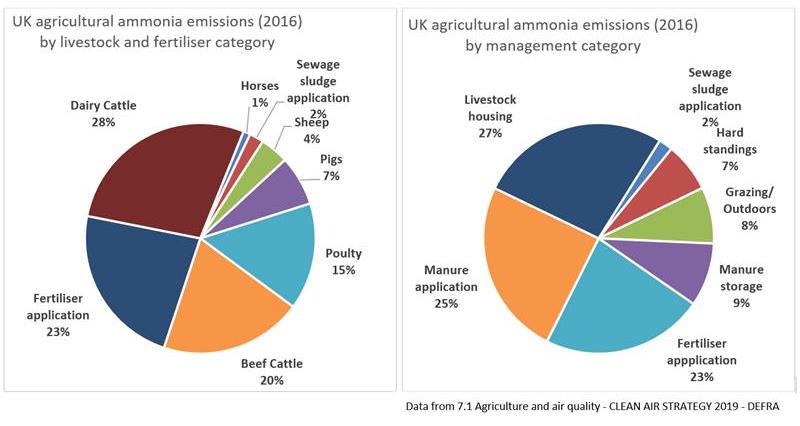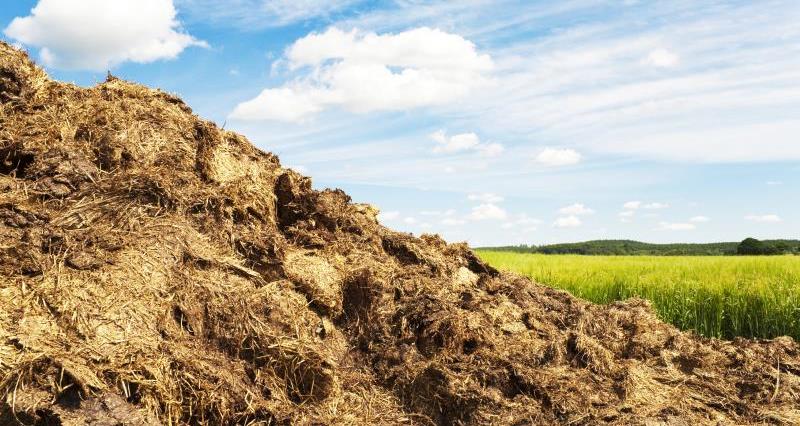Why do ammonia emissions from agriculture matter?
Ammonia, a volatile nitrogen compound, is released when slurries, manures and nitrogen fertilisers come into contact with air. When mixed with other air pollutants, for example from transport or industry, ammonia forms tiny toxic particles called ‘particulate matter’, leading to poor air quality and health problems. Ammonia deposition can also lead to soil acidification and excessive nitrogen in sensitive habitats, reducing biodiversity.
Ammonia, and therefore fertiliser value, can be lost whenever slurry or manure is exposed to air. Reducing exposure in housing, storage or during application to crops cuts losses but it is a continuous process. The nitrogen recovered in housing and storage can be lost at the point of field application so the risk should be managed at every point in the process.

What can I do to reduce ammonia emissions on farm?
Careful nutrient management can save money as well as reducing impacts on air and water quality and greenhouse gas emissions. Good practice in managing soil, manure, fertiliser and feed will also help reduce ammonia losses. Recovering as much nitrogen as possible for grass and crops will maximise the return you get from farm inputs.
Look to capture nutrients at every step in the process and adopt an integrated, whole‑farm approach to get the best performance from soils, grass, livestock and crops.
Steps you can take to reduce ammonia emissions on your farm include:
- Covering slurry and digestate stores or using slurry bags.
- Using low emissions techniques for spreading slurries and digestate on land (for example, by injection, trailing shoe or trailing hose).
- Incorporating manures into bare soils within 12 hours of spreading.
- Washing down animal collection points soon after use.
- Ensuring that levels of protein in livestock diets are well matched to nutritional needs.
- Switching from urea based fertilisers to ammonium nitrate, which has lower emissions, injecting or incorporating urea into soil or applying it alongside a urease inhibitor.
